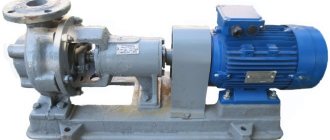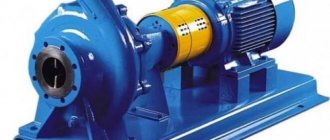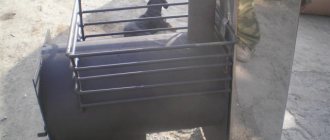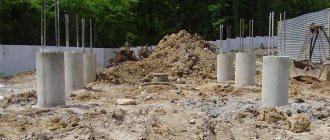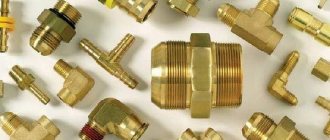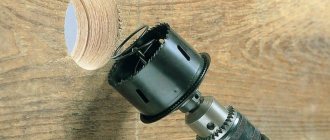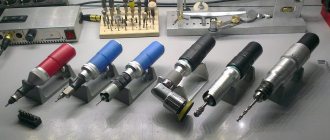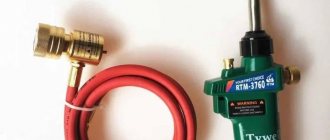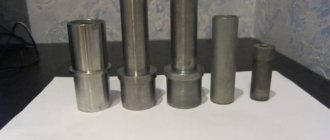How to choose a chiller for water cooling?
Budget air-cooled chillers are well suited for small spaces and private homes. To maintain low temperatures in production processes, you need to purchase more powerful, specialized and efficient equipment. The price of a chiller depends on the method of operation and the power of the device.
Equipment Features
In fact, the chiller cannot be called an air conditioner, due to the peculiarities of its structure and capabilities. A classic air conditioner does without an intermediate coolant, cooling the space directly, while the chiller always interacts with antifreeze or water. The main features of the chiller are:
- high degree of process automation;
- the ability to carry out cooling over a long distance, the magnitude of which depends only on the power of the circulation pump;
- high environmental friendliness and safety;
- ease of installation, because takes up little space;
- work regardless of weather conditions;
- efficiency.
When choosing a device, you need to familiarize yourself with the ratings of brands, evaluate the characteristics of the devices, and read reviews about the models.
System to be cooled
Chillers are used to air condition large spaces in specialized industrial processes. They work well in the chemical, pharmaceutical and food industries, as well as in plastics production and metal processing. Used to cool machines, power plants and modern equipment such as lasers or tomographs. Recently, they have been increasingly used in other industries: they are appearing in hotels, office buildings and large stores. We can also find them in small buildings and houses - this is the result of technological progress that allows us to create ever more compact devices.
What does such a system provide?
The whole process takes place in a closed loop. Piping systems connected to distribution pumps are used to transport the refrigerant. The water is cooled directly in the chiller. Next, the liquid enters receivers (coolers), which are most often fan coils - fan heat exchangers that look like traditional air conditioners. The water in them heats up by about 5-6 degrees. Then it is returned to the unit, where re-cooling occurs.
Chiller-fan coil systems can be centralized (one chiller serves several receivers) or decentralized (each chiller is equipped with its own cooler). Sometimes they operate in a cascade system, in which the cooling process consists of several phases.
Manufacturing process
A small homemade chiller will require about 10-15 m. Create turns. To do this, you can use a strong stick or other suitable object. The tube is bent to obtain the required number of spirals so that the overall size allows the structure to be placed in a container.
A hose is attached to one end of the tube. We connect one end of the hose to a faucet or pump, and lower the other end into a sink or other available drainage device. Chiller is ready.
Using a copper chiller when brewing beer
The principle of operation of a do-it-yourself chiller:
- The device is immersed in the container.
- The hose is connected to the tap. The second end is lowered into the sink.
- Cold water turns on.
- Hot liquid is placed in the container.
- There will be a rapid loss of temperature in the liquid.
Using a homemade chiller
A self-made chiller may be required for the following purposes:
- cooling malt when making homemade beer;
- reducing the water temperature in the aquarium;
- creating optimal conditions in a small pool.
Brewing beer with a chiller
Having a homemade chiller will allow you to quickly cool any liquid at a convenient time.
What types of chillers are there?
There are many options available on the market - units vary in power, size and purpose.
How to choose a chiller?
Some of them will be used in industry, others are designed for service industries or non-commercial facilities. The units can take the form of so-called monoblocks or consist of a set of several connected devices. There are 2 types of devices:
- with air (vapor compression) cooling;
- water (absorption) cooling.
Vapor compression chillers
Such designs are the cheapest and most common solution. They are usually more compact than absorption chillers. They are installed outside buildings (for example, in utility rooms or on roofs) to ensure constant access to fresh air. Ideal for sites where there is no space for a cooling machine room. The disadvantage is the limited temperature range to which they can cool liquid refrigerant. They cannot operate at temperatures that are too low (usually -15°C).
Absorption chillers
These types of units use warm water or an aqueous glycol solution, which is cooled in a dry heat exchanger or water atomization module. The devices can be installed indoors and are adapted to operate at any temperature. The fan coil and chiller can be located at any distance from each other. Low noise level and recycling of energy resources are among the main advantages. Installation requires additional equipment: distribution pumps, hydraulic systems and cooling towers will be required. This makes these solutions more expensive and specialized.
Vapor compression
Models of vapor compression devices may have slight changes from the classic design, but the basic design for all looks the same and includes:
- evaporator,
- capacitor,
- compressor.
The operating principle is based on the manifestation of the phenomenon of condensation with increasing pressure. The refrigerant vapor is compressed by a compressor, increasing the pressure to 30 atmospheres or more. The temperature of the substance rises to 70 degrees, and the condensation process begins.
Outside air blows over the condenser, lowering the refrigerant temperature. Freon gas condenses, turning into liquid. The hot composition cools, heating the air.
After passing through the control valve, the refrigerant expands and its temperature decreases as a result of the pressure drop. The refrigerant boils. After passing through the evaporator, freon changes its state of aggregation to gaseous. As a result, the coolant is cooled. This completes the cycle and the refrigerant is returned to the compressor unit.
These are the basic principles of the chiller operation scheme. There are devices that operate in a reverse cycle - designed for heating, not cooling .
Chiller calculation
There are several aspects to consider when designing each system:
- The pipe diameter must provide adequate refrigerant flow. Flow rates that are too high or low can negatively affect the cooling system.
- The thickness of the pipeline walls must take into account the pressure in the system.
- Resistant to glycol, chemicals and other compounds. Improperly used coolant materials can cause corrosion or scale.
- Pipe resistance to high and low temperatures. Most plastic pipes (PVC) do not tolerate high and very low temperatures of the transported medium. This leads to air entering the cooling system, as well as deformation of the installation.
The system must be sealed, durable and resistant to the chemical attack of the refrigerant.
Characteristics of climate control units
Different chiller models are characterized by different power, which can range from 5 kW to 9 thousand kW. Low-power products are great for work in an office or hotel, while high-power products are used in industrial enterprises and production workshops.
There are other characteristics that also give an idea about the device and may influence the choice of model. When choosing a chiller , you should study the following parameters:
- productivity, measured in kW, from 10 kW to several thousand;
- brand of refrigerant used (selected depending on the type of compressor and operating temperature environment)
- rated power can vary from 30 to 200 kW;
- geometric dimensions range from 0.5 to 4 meters for each parameter: length, width, height;
- weight from 0.1 to 2.0 tons.
- The chiller design can be monoblock or with a remote condenser.
Types and models of auxiliary devices, such as a compressor, evaporator, condenser are installed by the company that manufactured the chiller .
How to connect the chiller correctly?
The installation must be secured to the ground or to supporting elements with due care. When designing and constructing a system, the customer must be provided with technical parameters, operating pressure and flow. The cost of construction includes design services, construction of a hydraulic system, purchase and installation of receivers, as well as assembly of additional devices, such as cooling towers. However, the higher investment costs compared to traditional freon systems are quickly recouped thanks to low operating costs.
Design and principle of operation
A chiller, in fact, is a special refrigeration unit that is used to cool a wide variety of liquids. Chillers are used in many areas of production:
- in the alcohol industry;
- in the food industry;
- in medicine;
- in mechanical engineering.
There are always 3 main components in the design of any chiller, namely:
- compressor;
- capacitor;
- evaporator.
Today, the most popular type of device is the classic monoblock chiller. Its main advantage is, in fact, its monoblock design - due to this parameter, the workspace is significantly saved, since all the elements are already integrated into the device. Installation of a monoblock chiller is very simple - you just need to connect the device, pour in water and press the “on” button. However, one of the disadvantages of these models is the lack of a tank enlargement function.
Another model of the device is a chiller with a remote-type condenser. A distinctive feature of this equipment format is its increased efficiency in warm weather and the ability to connect to large water tanks.
Another significant component of the chiller is the evaporator, which is a completely sealed tank through which the cooled liquid flows. Inside it there is a copper spiral, which acts as a profile for freon. It is through the walls of the spiral that heat is exchanged between the coolant and the refrigerant.
The principle of operation of the chiller is as follows: the compressor compresses the evaporation from the refrigerant, this increases the pressure and, accordingly, begins the condensation process. After this, the heated liquid is sent to the condenser, and it, in turn, sends the heat out.
As soon as the refrigerant takes on a completely liquid state, it is transferred to the throttle - a special device located before the evaporator and important for reducing pressure . In this case, the steamed refrigerant, passing through the evaporator, is modified, converted into steam, and takes away energy from the coolant, thus cooling it.
Chiller or air conditioner: which is better?
The air conditioner uses a common and cheap component - water. It is no less effective, but more environmentally friendly than freon, which is expensive and harmful to the environment. The chiller is quieter, more sealed and less prone to failure.
What is the advantage of a chiller over traditional air conditioning units?
The system is cheaper to operate: it does not require a large amount of energy to operate. However, the construction of the installation requires large investment costs, is more complex and requires professional design. It is cheaper and easier to install an air conditioner for a home, apartment, small factory or office. For large facilities (industrial enterprises, power plants or shopping centers), installing chillers is more cost-effective.
Introduction
From the editor (ALT-F13): It just so happened that we were able to publish the article just two months after it was written. During this time, the author did not sit idly by, but moved further towards more extreme cooling. Now Steff is engaged in assembling homemade phase-change direct-die systems, in common parlance - “freonok”. At the time of writing these lines, he has already demonstrated the second version of his system. However, the first one also worked great. So the lines with which the text of this article begins - “I became interested in extreme methods of cooling a computer quite recently, so this is a description of my first experiment in this area” can be considered invalid :)
I became interested in extreme computer cooling methods quite recently, so this is a description of my first experiment in this area.
I used water cooling for several years, but the moment came when I wanted more. You could, of course, buy a ready-made Asetek VapoChill or nVentiv Mach II (ex-Prometeia) system, but freons have their drawbacks. Firstly, this is the price, and secondly, the ability to cool only one element of the system. To cool, for example, a video card, you would have to buy another device and seriously bother with installation. Starting my acquaintance with extreme cooling by building a homemade direct-die system seemed to me quite a difficult task, so I chose a different path. An alternative to direct-die cooling are water chillers, that is, water-cooling systems with efficient cooling of the refrigerant, allowing to achieve temperatures below ambient temperatures. Today there is only one serial water chiller; it is a rather inefficient (about 0 degrees at 50-70W load) and expensive ($330) system from Swiftech. The Dutch OC-Shop.com promise to start selling their chiller, but over the past six months they have not made much progress towards the goal. Only the price of the product is known - 600 euros, which is even more than the Swifttech product. Due to the lack of effective mass-produced chillers, there are two options left - make it yourself or buy a chiller designed for another application. There are two main types of water chillers: based on phase-change or using Peltier modules. The first are a dual-circuit system, where the freon evaporator cools the refrigerant in the liquid cooling circuit. In the second case, water or other refrigerant passes through a water block cooled by Peltier modules. This type of chiller is more compact and easier to manufacture, but suffers greatly in terms of temperatures and the efficiency/energy consumption ratio. Thus, 500 W of the total power of the modules gives a liquid temperature just below zero degrees at a load of about 100 W. So, it’s decided - we’ll make a phase-change waterchiller with three cooled elements (processor, northbridge, video card core).
Conclusion
The choice of chiller depends on the operating conditions and intended use of the device. Air-cooled units are in demand in cases where there is no space to accommodate an engine room. Absorption chillers require the use of condenser coolant distribution pumps as well as cooling towers, which increases the cost of investment.
By implementing heating and cooling functions in one device, we help improve its energy efficiency. Water cooled condenser systems are a good solution for businesses where we can use hot water from the condenser. The use of appropriate refrigerant in air-cooled chillers also ensures stable operation of these units regardless of the time of year.
Fan coil control
Manual control allows you to regulate the supply of cold or hot coolant by turning off the tap manually or using the remote control.
Automatic control is carried out using an electrical or electromechanical thermostat. The device maintains the temperature set on the thermostat.
The devices are mounted in a pre-selected location, which can be on the wall, floor, or ceiling. If you plan to use climate control devices for cooling , then the best place would be the ceiling. To heat rooms, it is better to install them on the floor near the walls or in the lower sections of the walls.
Best options: buyers' choice
The devices are arranged according to user ratings and device complexity. From the simplest to the most complex. Prices for coolers are also increasing accordingly.
What kind of water cooler do you have at home?
FloorTableTable
General classification of coolers:
- floor;
- desktop;
- with bottom loading container;
- with top loading container.
Coolers can also be equipped with a refrigerator, a heater, or without additional functions - only pour water.
